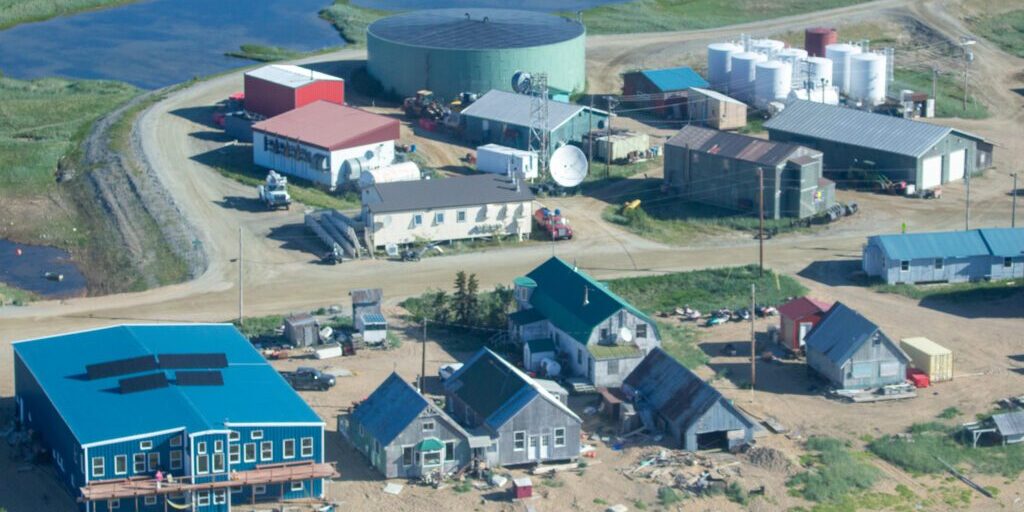A $16 million Rebuilding American Infrastructure with Sustainability and Equity (RAISE) grant from the Department of Transportation has been awarded to Kawerak, Inc. on behalf of the Village of Golovin. The funding will be used to construct roads for a new subdivision located on higher ground.
Mayor of Golovin, Sierra Smyth, said the grant comes after years of planning and collaboration between the city and tribal council.
“It’s been two years since the city and the tribe put in support for the grant. At the time we were pretty close to wrapping up our Master Migration Plan, and that has been finalized since then,” Smyth wrote in a text message to KNOM.
2022’s ex-Typhoon Merbok accelerated the urgency for Golovin to relocate critical infrastructure to higher ground. Homes on the village’s lower level –a sand spit near sea level– were flooded or destroyed following the devastating storm. The village’s power plant, school, and store are also located on the lower level of the community.
Just to the east of the sand spit is land about 60 feet above sea level that the village can move to. Importantly, the land is out of a projected 500-year floodplain, making it a safe location for the foreseeable future. The village's airport as well as several homes and community buildings are already located on the higher ground.

Smyth said the plot of land where the new subdivision is expected to be built will require authorization from the Golovin Native Corporation. She said they may also explore completing a 14(c)(3), a provision under the Alaska National Interest Lands Conservation Act that allows for land reconveyances from the federal government to Native Village Corporations.
Smyth said there’s still a lot of work to do and compromises will be necessary, but that she remains optimistic nonetheless.
“This is a really important factor for some of our residents who are most affected by the storm surges and erosion,” Smyth said.
According to a fact sheet for the project, the village plans to begin work in March of 2027.




